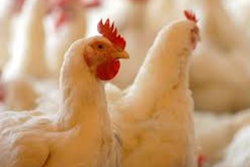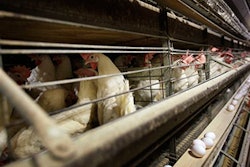Editor’s Note: This is the third post in a three-part series that looks at the vertical farming industry and the role engineers can play in developing the technologies to make it more scalable, inspired by the element14 Community’s new Vertical Farming Design Challenge. Read part one and part two for more.
In the first post of our vertical farming series, we took a look inside this growing subsect of urban agriculture aimed at preventing food shortages by harvesting crops in unused industrial spaces. Lighting, energy and automation remain the three biggest issues to establishing and maintaining a vertical farm.
In our second post, we examined how those same issues also apply to home-based vertical farms, which have flourished in recent years thanks to out-of-the-box solutions, small-scale engineering systems and a thriving community that provides support for vertical farmers of all experience levels to succeed.
Also See: Meeting Today's Fresh Food Challenges
While we’ve looked in detail at the applications and technological innovations that have paved the way for more vertical farms, what do those applications and innovations look like in practice? In our third and final post of the series, we tour some of the most compelling examples of vertical farms from around the world.
Deliscious: The Netherlands
Deliscious has established a nearly 50-year-old reputation for growing some of the freshest root ball lettuce in the world. Twin brothers Roy and Mark have married a love for good produce with technical know-how that puts Deliscious at the cutting edge of vertical farming.
Deliscious is the first Dutch company to use a mobile channel system where lettuce grows in water channels filled with nutrients critical to a young plant’s development. With support from Philips’ LED lighting formula, the team at Deliscious designed four sealed climate chambers that cultivate the seeds into fully-grown lettuce plants. Nearly everything in Deliscious’ facility — from seeding to harvesting — is automated.
The Mirai Company: Japan
In a different part of the world, another vertical farming facility is making headlines for its unique approach to growing lettuce. The Mirai Company in Japan designed one of the world’s largest indoor farms, reportedly having produced 10,000 heads of lettuce.
After taking over a giant semiconductor factory following the 2011 Tohuko earthquake and tsunami, Japanese botanist and businessman Shigeharu Shimamura contracted General Electric to devise an LED system that uses 40 percent less energy and reduces food waste by nearly 30 percent. Towering rows of seed trays are stacked according to precise measurements of temperature, humidity and darkness.
The facility is in itself another feat of engineering innovation: clean rooms, thermal insulation and high ceilings means Mirai’s vertical farm grows 100 times more vegetables per square foot than conventional farming methods.
AeroFarms: New Jersey
Stateside, AeroFarms got its start growing in the Finger Lakes region of upstate New York, selling to local restaurants and retail locations before moving to Newark, New Jersey to build what they promise will be the world’s largest indoor vertical farm for baby leafy greens and herbs.
The AeroFarms system uses aeroponics and LEDs to create a controlled growing environment. Stackable modules consist of a solution chamber at the bottom, cloth medium and aeroponic mist chamber in the middle and leafy greens and LED lighting on the topmost layer.
AeroFarms’ system is not only free of pesticides and run-offs, but incredibly scalable. The AeroFarms system can be customized to each unique location without compromising on the quality or quantity of harvest. If AeroFarms can prove that aeroponics will streamline vertical farming, their technology has the potential to be implemented on a larger, warehouse-level scale.
The Panasonic Facility: Singapore
Even electronic companies are getting into the vertical farming game. Toshiba, Fujitsu and Panasonic are the latest to invest in indoor farming facilities to solve the global food supply problem. Currently producing 3.6 tons of vegetables a year, Panasonic’s 248-square-meter farm is housed inside of a factory building on the outskirts of Singapore.
LED lights and strictly-enforced temperature, humidity and CO2 levels will allow the company to grow more than 30 crop varieties by March 2017. Much like Deliscious, Panasonic’s facility has made headlines for automating most of the vertical farming process. By also supporting established local vertical farms, like Sky Greens, the company’s endeavor is certainly one to watch in the coming years.
The vertical farming movement is only just beginning. Everyone — large-scale tech companies, electronics engineers, local farmers and even residential growers — can help to bring it into the mainstream. Though vertical farming will not be without its challenges, it presents a real opportunity for sustainable, scalable food manufacturing. If economic and population projections are correct, that is an opportunity we desperately need to seize.
About the Author
Henry Gordon Smith is the Association for Vertical Farming Regional Manager in North America and an adviser in the element14 Community’s new Vertical Farming Design Challenge. Learn more at www.element14.com/verticalfarming























